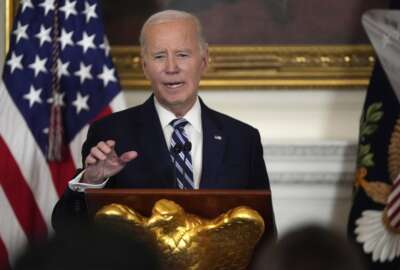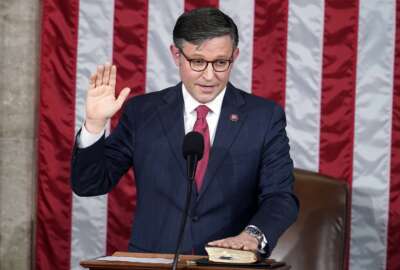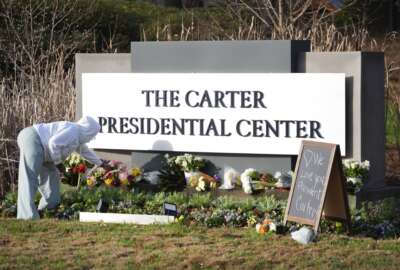A look at North Korea’s evolving brinkmanship
North Korea observers have long marveled at the impoverished, autocratic nation's ability to go toe-to-toe with the world's superpowers
SEOUL, South Korea (AP) — North Korea observers have long marveled at the ability of a small, impoverished, autocratic nation to go toe-to-toe with the world’s superpowers.
Part of the secret to North Korean success has always been the ruling Kim family’s mastery of the art of brinkmanship.
What looks to outsiders like bluster, bombast and recklessness is actually a proven technique that over the years has won North Korea grudging respect from Washington and its allies, and at times filled its coffers with aid offered by rivals relieved to see animosity on the Korean Peninsula ease.
In recent weeks, however, the roles may have reversed, with a new administration in Washington bulldozing its way to the brink before finally backing away.
Korean war jitters made global headlines after U.S. President Donald Trump issued repeated, ambiguous warnings about his willingness to take unilateral action and sent U.S. military vessels to Korean waters. This week, however, Trump announced a much softer policy that combines diplomacy and economic sanctions and is strikingly similar to what frustrated past presidents embraced.
North Korea used to employ a comparable method: Forcing the world to pay attention by staging nuclear and missile tests, issuing outrageous threats and occasionally lashing out with violence — and then offering up negotiations.
For decades, the tiny, Third World dictatorship sandwiched between rich behemoths played the game remarkably well. But some now see North Korea entering a frightening new phase, barreling across what were once considered red lines in a dash to build nuclear-armed missiles that can reach the U.S. mainland.
Here is a brief examination of North Korea’s mastery of brinkmanship, and what might be coming next:
___
US BRINKMANSHIP?
Brinkmanship can be defined as the technique of pushing a dangerous policy to the edge of safety before stopping.
Some Korea experts, analyzing what happened in recent weeks on the Korean Peninsula, believe that this time Washington engineered the brinksmanship.
Presumably worried that North Korea would soon conduct its sixth nuclear test, the Trump administration threatened a possible attack, ordered a supercarrier and nuclear-powered submarine to Korea and linked the recent U.S. bombing of Syria to North Korea.
“They were putting the idea of a surprise military action out there, which is the definition of a dangerous policy on the Korean Peninsula,” John Delury, an Asia expert and professor at Seoul’s Yonsei University, said of the U.S. moves.
Trump seemed to think he could pressure North Korea into giving up its nuclear weapons and, if that failed, would then consider a pre-emptive strike, said Koh Yu-hwan, a North Korea expert at Seoul’s Dongguk University.
North Korea, for its part, was relatively restrained, analysts said.
Yes, North Korea expressed anger, as it does every year, over annual springtime joint military exercises by Seoul and Washington that the North calls invasion preparations.
But its response did not go beyond what happens most years. That included bellicose threats, a (failed) missile test linked to the celebration of the birthday of North Korea founder Kim Il Sung, and war games during the anniversary of the founding of the Korean People’s Army.
___
NUCLEAR AND MISSILE TESTS
A big part of North Korea’s past brinkmanship has always involved its weapons program. That may be changing.
The country is thought to have a small nuclear arsenal, and some analysts believe it can mount atomic warheads on short- and medium-range missiles that can target South Korea, Japan and spots in the Pacific.
Each new nuclear detonation and long-range rocket launch worries Washington because they put North Korea that much closer to its ultimate goal of a nuclear-armed long-range missile.
The tests have also served a political purpose in years past.
North Korea conducted its first nuclear test in 2006, under current leader Kim Jong Un’s father, the late Kim Jong Il, but the North took years between its subsequent tests and was willing to talk about giving up its nuclear program for security guarantees from the United States.
Some analysts believe that Kim Jong Un, who took over in late 2011, abandoned this pattern of brinkmanship in 2016 when North Korea sped ahead with nuclear weapons development, conducting two nuclear tests and a long-range rocket launch that year.
This may signal that Kim is now pursuing a nuclear arsenal, which North Korea calls its “treasured sword,” as a goal in itself, not as leverage for negotiation.
“The key to brinkmanship is to gradually push a threat, increasing the pressure in phases, but not to a point where you actually do what you’ve threatened to do,” said Koh. “Right now, North Korea is just dashing toward getting nuclear weapons.”
____
BLOODSHED AND THREATS
Earlier in Kim Jong Un’s rule, violence, or its threat, was also a part of his brinkmanship.
The spring of 2013 saw an extraordinary, near-daily barrage of North Korean threats, including warnings of nuclear strikes against Seoul and Washington, following international criticism of the North’s third nuclear test.
North Korea then gradually dialed down its threats and sought improved ties with South Korea in what foreign analysts said was an ultimately futile attempt to lure international investment and aid.
A land mine blast, which Seoul blamed on North Korea, maimed two South Korean soldiers in 2015. The rivals threatened each other with war before they stepped away and agreed to hold high-level talks. Not long after those discussions fell apart, North Korea conducted the first of its two nuclear tests in 2016.
Perhaps North Korea’s relatively low-key response to Trump’s threats comes from its huge array of artillery and missiles aimed at the 25 million people in the greater Seoul metropolitan area, most of which is only about an hour’s drive from the border.
What is essentially one of the world’s most unique hostage situations must weigh on both the U.S. and North Korea whenever the rivals push toward the brink.
___
Associated Press writer Kim Tong-hyung contributed to this report.
Copyright © 2025 Federal News Network. All rights reserved. This website is not intended for users located within the European Economic Area.





